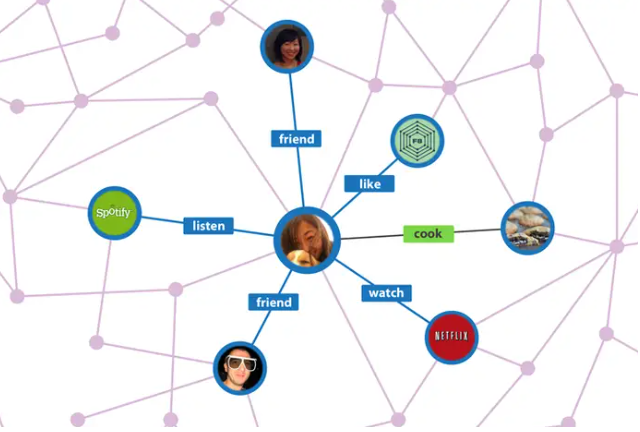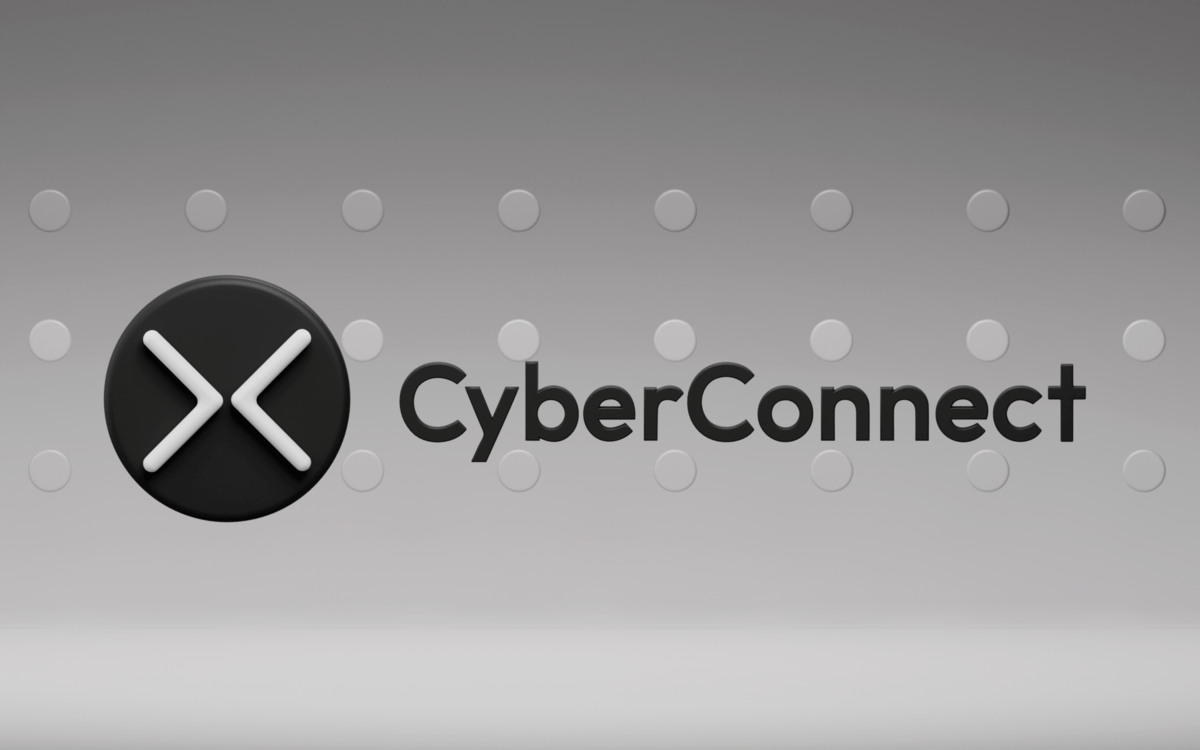What is Social Graph? Social Graph is a graph that represents relationships between entities in an online social network. So what’s special about Social Graph? Let’s find out with Weakhand in this article.
Before jumping into the article, everyone can refer to some of the following articles to better understand.
- What is SocialFi? Top 5 most prominent SocialFi projects today
- Lens Protocol vs CyberConnect: Which is the best SocialFi platform currently
- What is Lens Protocol? Lens Protocol cryptocurrency overview
- What is CyberConnect? CyberConnect cryptocurrency overview
What is Social Graph?
Social Graph is a graph that represents relationships between entities in an online social network. It represents the connection between individuals, groups and organizations in a social network. When an individual creates a social media account, posts content, and follows others, new connections in the social graph are created.
Although the term Social Graph has existed for a long time, it became popular when Facebook CEO Mark Zuckerberg reintroduced it at the Facebook F8 conference on July 24, 2007. At the conference, Zuckerberg discussed policy changes in the platform to introduce a Social Graph – a chart that records the relationship connection network of Facebook members to enhance each user’s web experience. .
Each Social Graph is usually represented as edges and nodes in which each node will represent an entity and each edge will represent the interaction between nodes in the social network. Each Social Graph is a database that records all activities and data in the social network and is stored on centralized servers.

Example of a Social Graph
For example: If a Buu Pro 1325 user creates an account on Facebook, Buu’s Facebook account will represent a node in the Social Graph and Buu’s interactions with other people (other nodes) such as: like, add friend,… will be represented by edges.
When a Social Graph has a small number of nodes, it can easily be mapped on a whiteboard, using solid lines and colored dots to represent relationships. However, when a Social Graph has a large number of nodes, the interwoven relationships can quickly become confusing, making it difficult for anyone to derive meaningful information from the graph.
Current social media platforms including Facebook are using graph database software like Apache Giraph which makes it easier to analyze large, complex social graph databases through queries. . This is also how most current social media sites use search algorithms to personalize news feeds and target ads.
Current Issues With Social Graph Web2
Centralized Social Graph Web2 models have dominated the world for the past decade, with no data belonging to the users and very few governance policies in place. At first glance, this may not seem like a big problem, but let’s take a closer look at some of the problems being encountered, including:
User privacy
Social media platforms collect user data by tracking their online behavior. They then sell this user data to third parties for profit.
For example: In Q2 2022 alone, Facebook or Meta earned advertising revenue of 28.15B USD from selling user data. Furthermore, the Cambridge Analytica scandal revealed disturbing things about the misuse of user data on Facebook during the Trump presidential campaign. All of the above puts user privacy at risk because the main source of revenue for these web2 platforms comes from their own users.
In Web3, users have full control over their data meaning their privacy and information security are preserved. A recent example is Polygon ID, which focuses on privacy as a fundamental feature and allows people to access the application anonymously, keeping things private to themselves and without requiring a middleman perform user interaction.
Data ownership
Have you ever read the “user service agreement” or “privacy policy” when registering an account on web2 social networking platforms? Most Web2 social networking platforms will have a requirement that users remove ownership of their data.
These platforms even have the right to dictate their terms regarding the use and processing of user data, with individuals even susceptible to having their accounts banned if they express any erratic views. about a sensitive topic such as politics, etc. This is called the user’s right to freedom of speech when participating in a social network.
Centralized data storage and data leakage problem
The core problem of Social Graph Web2 models is that all user data is stored in a centralized database, making it vulnerable to cyber attacks and data leaks. Data loss due to hacking or leaks is a significant risk that users, especially celebrities, face when using particular online platforms, and Web2 social networking platforms are no exception. . A typical example is the Cambridge Analytica scandal I mentioned above, where millions of Facebook users’ data were abused for personal gain.
In SocialFi Web3 platforms, user data is stored decentralized on storage platforms such as: Arwearve or typically IPFS – a Peer to Peer (P2P) storage protocol. The IPFS system includes many nodes to store user data on the Blockchain. This creates a decentralized storage system, ensuring user data is much safer and more secure.
How Does Web3 Create Decentralized Social Graph?
The main goal of Web3 is to decentralize and return data ownership to users. By using Blockchain technology and on-chain identification, data will be controlled by users instead of social media platforms. This would strip away the power that social media giants have over user information and give control back to users, who deserve to be the immediate owners of their data. from day one.
For Social Web3 platforms, Social Graph is a decentralized database stored by many nodes on the Blockchain. Although this data source is publicly accessible, users have full control over their data and the right to decide who they want to share it with. Because Social Graph Web3 provides self-sovereign identities, maximum privacy is guaranteed for every user.
In addition, Social Graph Web3 data is stored on Blockchain and applications can use this data source to build their dApps. This gives users more freedom to choose the application, community culture, and policies that best suit their needs.
Some Popular Social Graph Platforms in Web3
Social Graph is in the early stages of development, below are some popular Social Graph platforms in Web3:
Lens Protocol

Lens Protocol
Lens Protocol is a decentralized social network ecosystem with a web3 vision built on the Polygon Blockchain. Lens Protocol is designed to empower creators to own the links between themselves and their communities, creating an entirely new user-owned composable Social graph. The protocol is built from the ground up with modularity in mind, allowing new features to be added while ensuring unchanged user-owned content and social relationships.
Because users own their data, they can bring it into any application built on the Lens Protocol ecosystem. In addition, each dApps using Lens Protocol brings benefits to the entire ecosystem, thereby creating a harmonious relationship between dApps to develop together.
Lens Protocol was built and developed by Aave – one of the leading Lending platforms on the market today. Recently, Lens Protocol also announced the launch of version V2 with a number of outstanding features such as: Open Action, Lens Profile applying ERC 6551 standard,… This promises to be a driving force to help Lens reach and expand its user base in the market.
CyberConnect

CyberConnect
CyberConnect is a decentralized social network protocol (Social Graph) built and developed on many Blockchain platforms such as: Ethereum, BNB Chain, Polygon, …. CyberConnect is providing Social Graph infrastructure Module for web3 applications and developers can plug the Social Graph Module into their applications.
CyberConnect’s goal is to create a decentralized Social Graph that is publicly accessible to everyone, autonomous, independent of Blockchain, and supports privacy protection features. CyberConnect’s ecosystem has many large projects such as Link3, Mask,…
summary
Over time, we see technology developing continuously and bringing users more benefits. At the present time, it is difficult for Social Graph Web3 platforms to replace giants such as Facebook, Google,… But this is a new innovation that promises to change the way people use and interact on social networks. Above is all the information that I want to introduce in this article, hope everyone has received useful knowledge.


